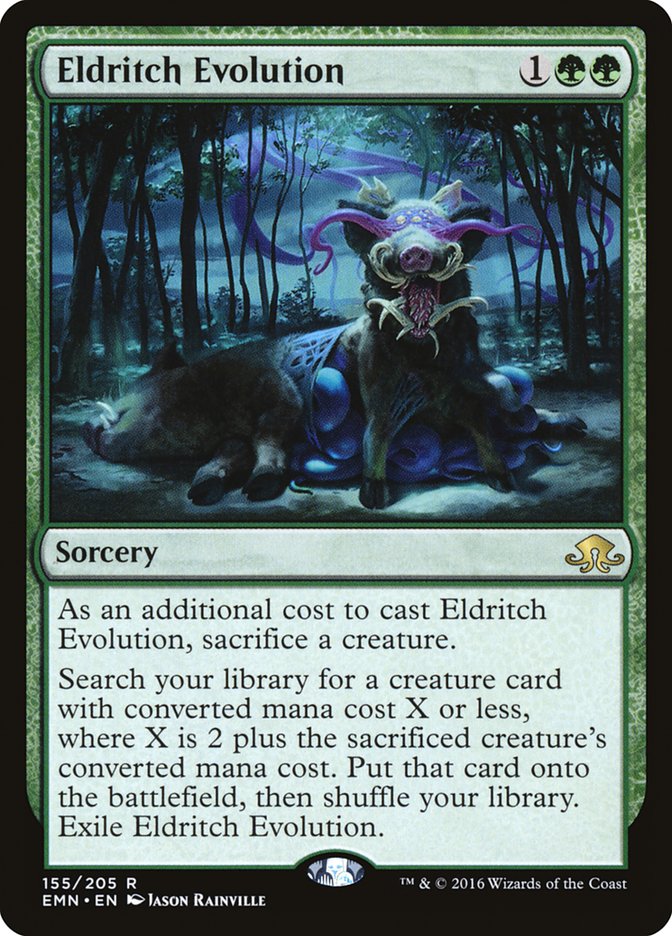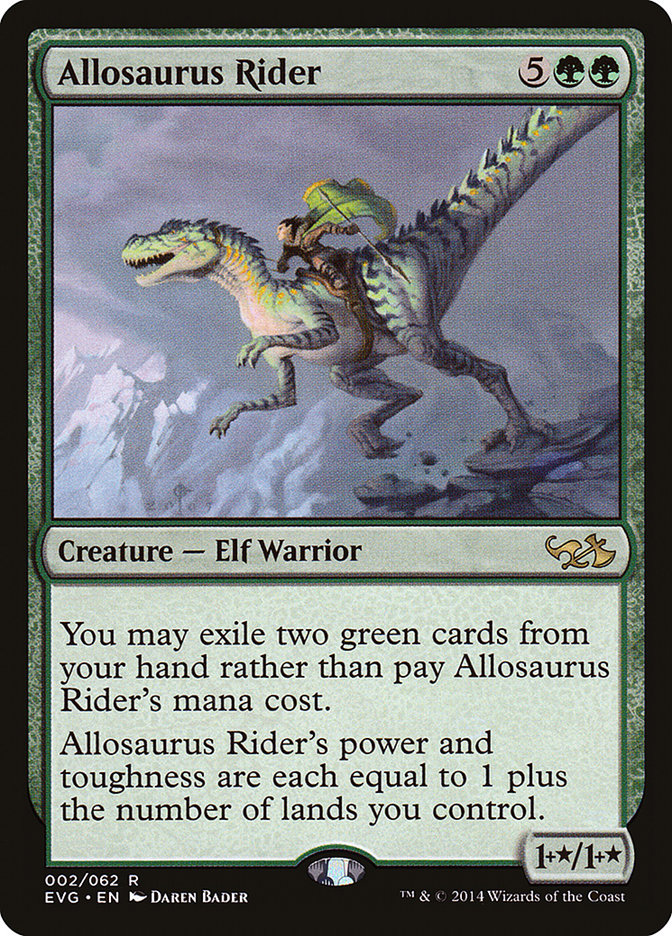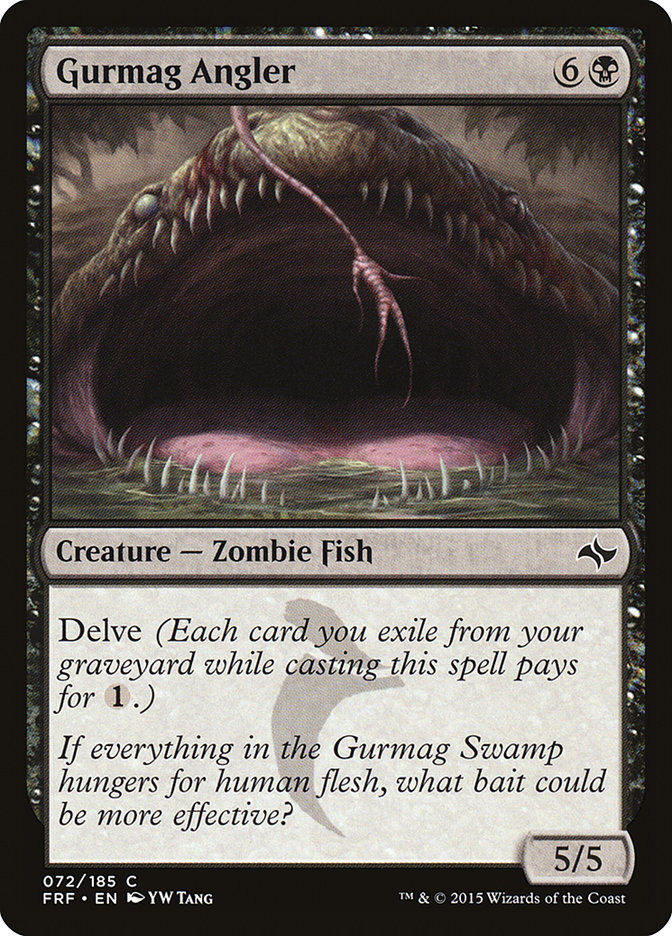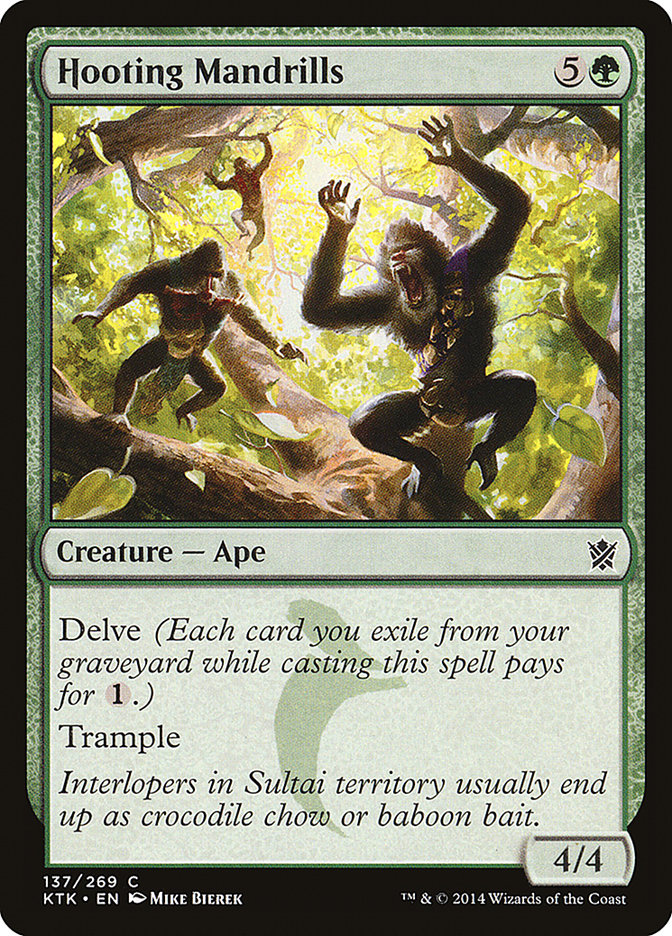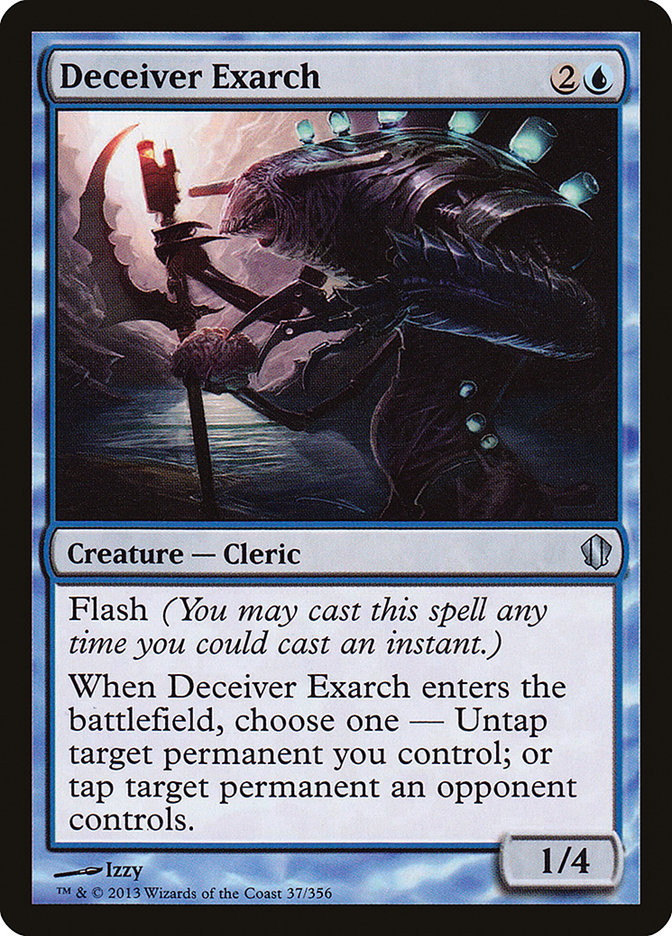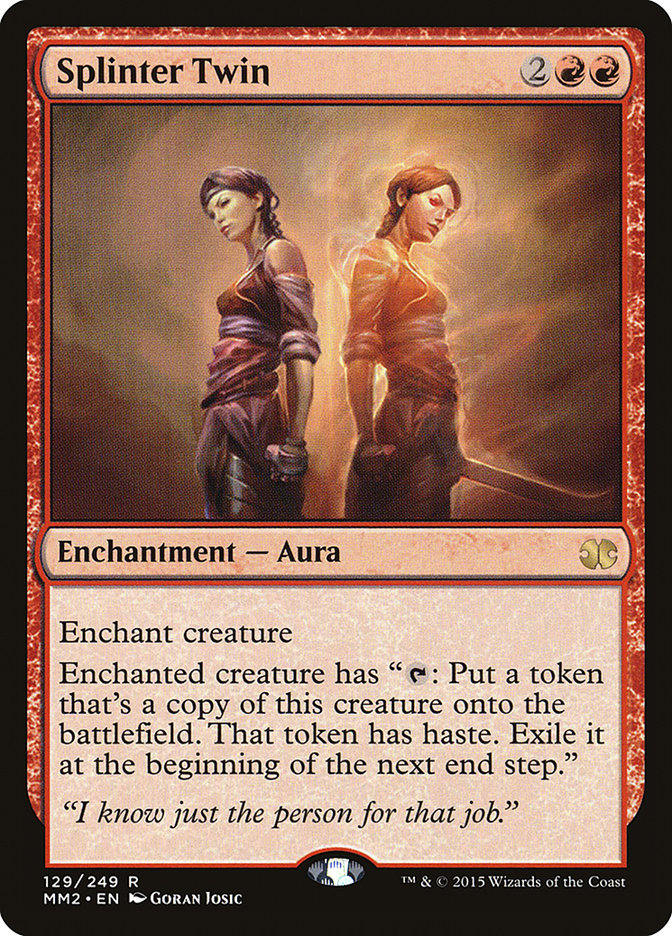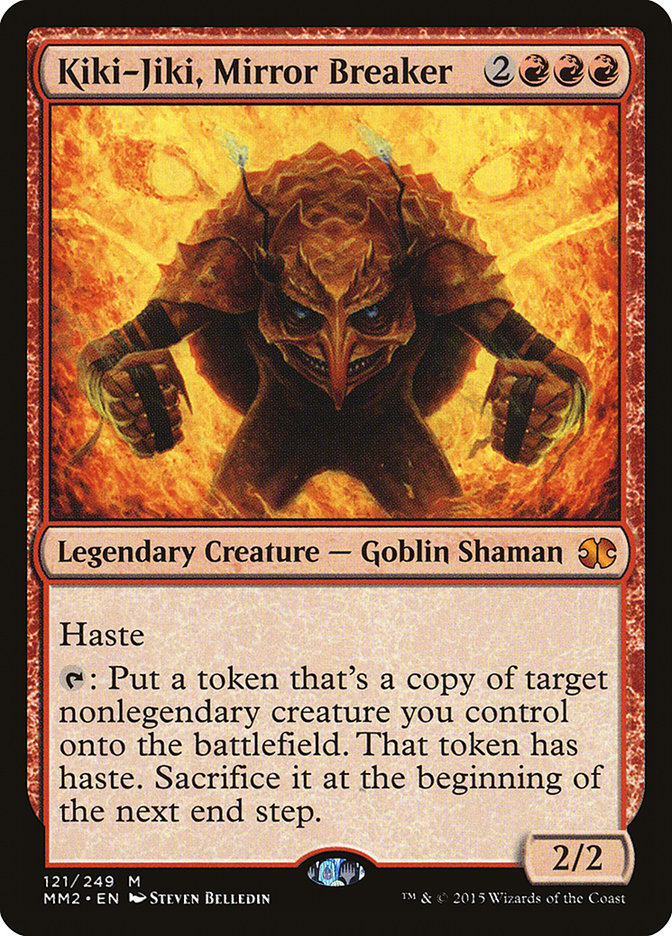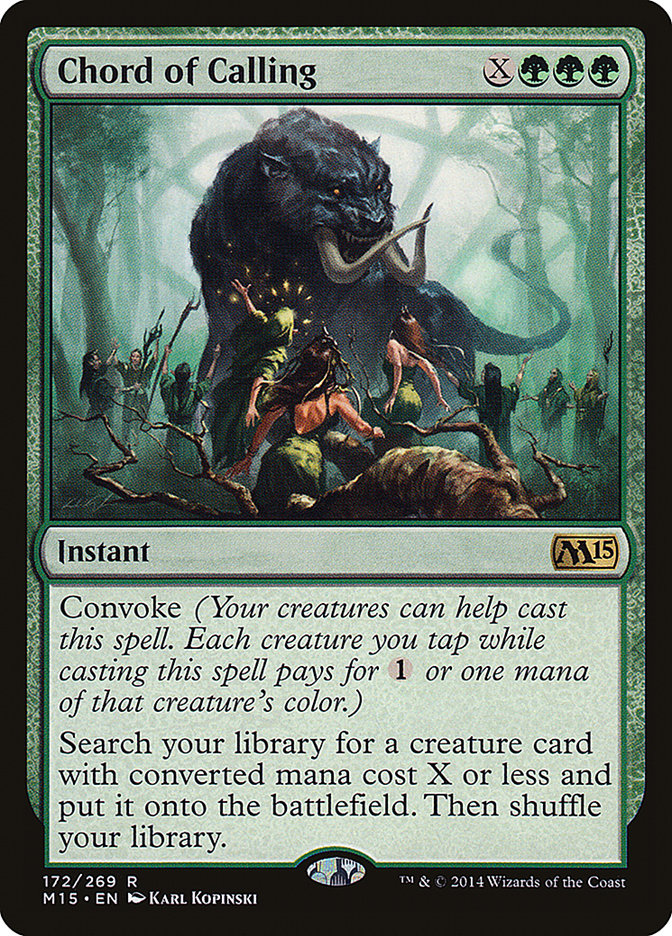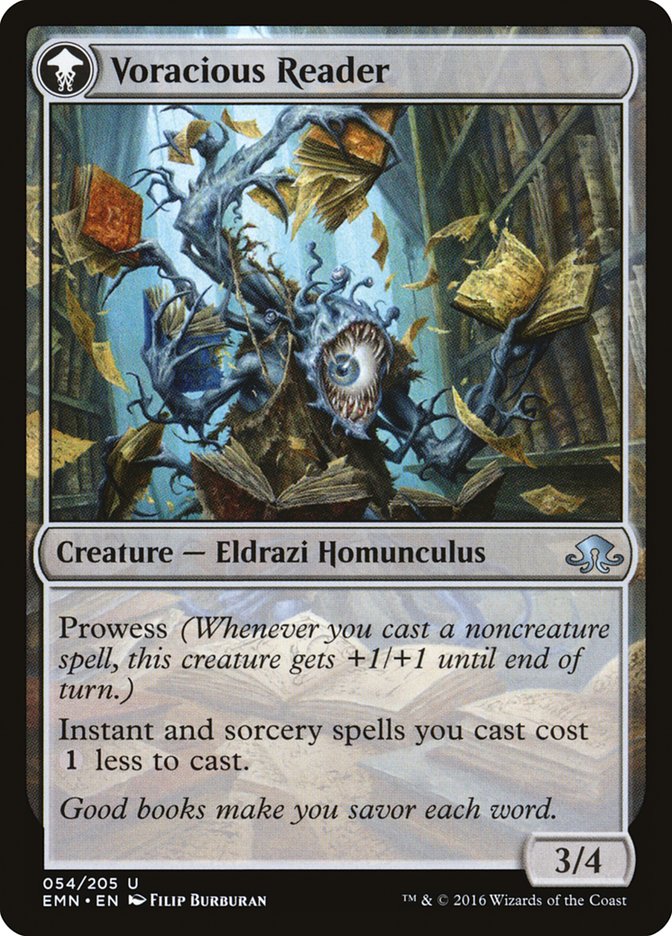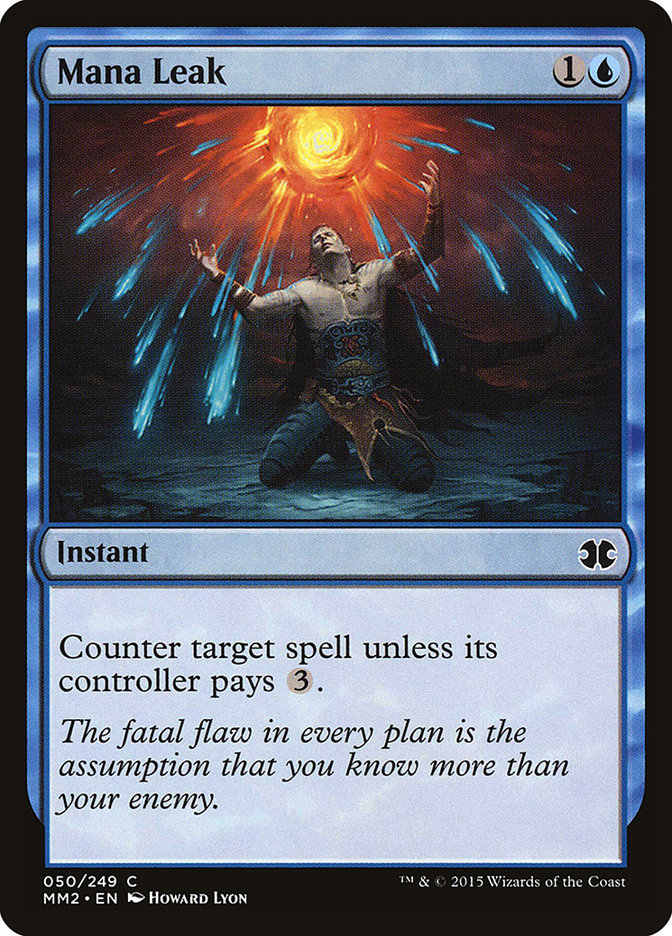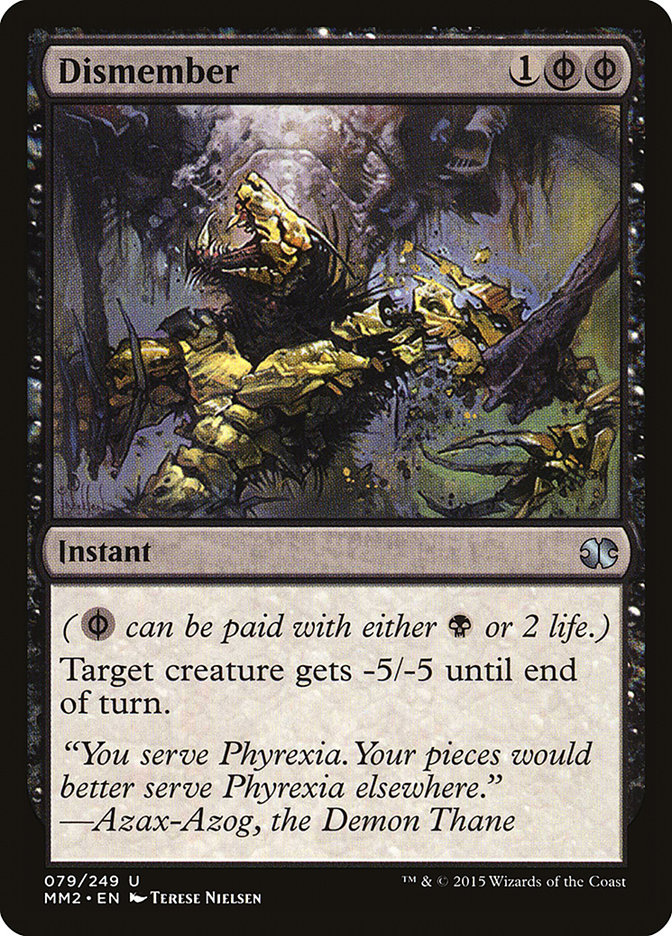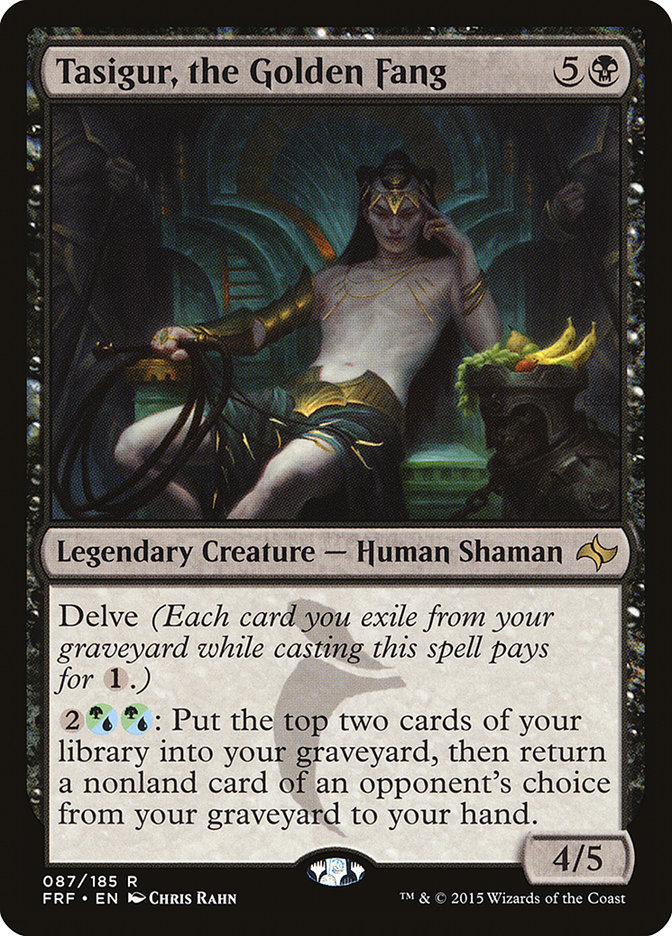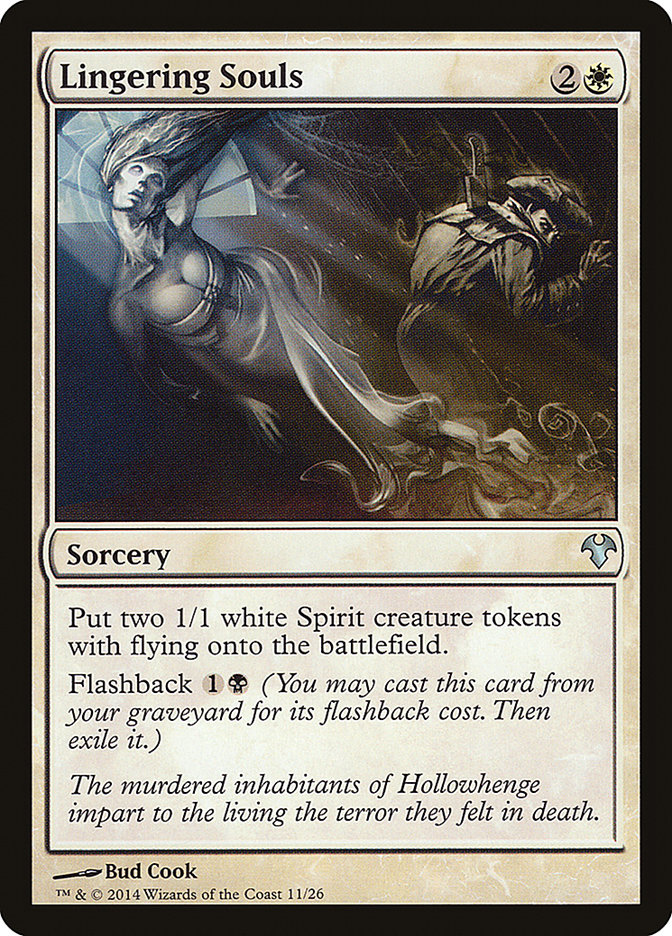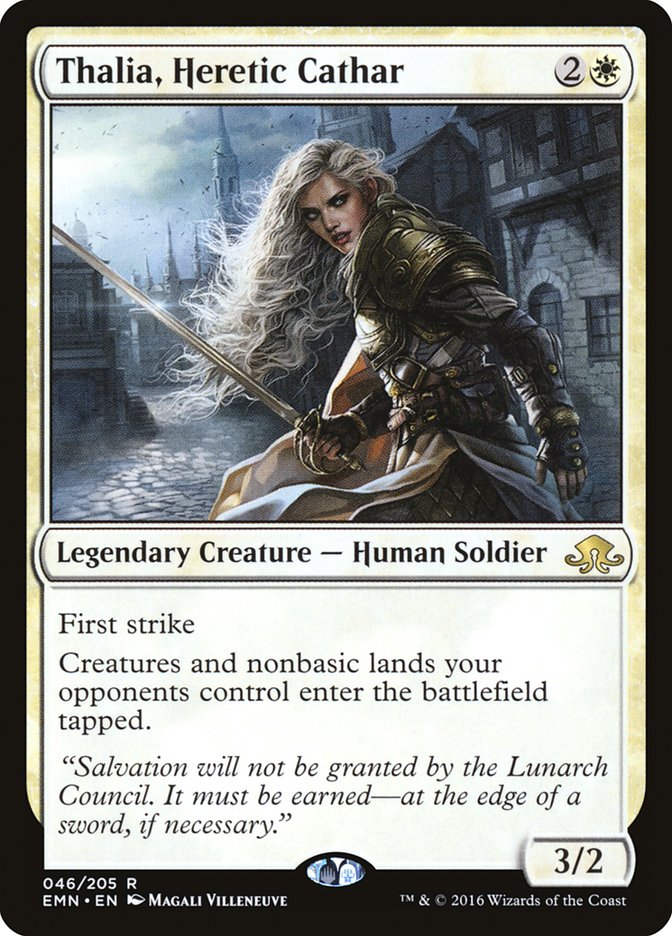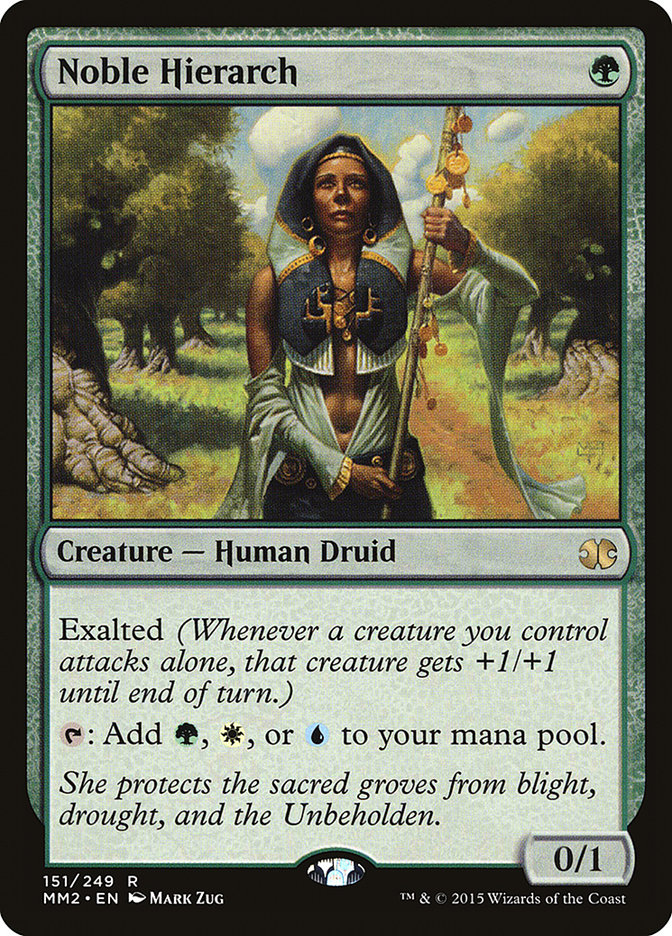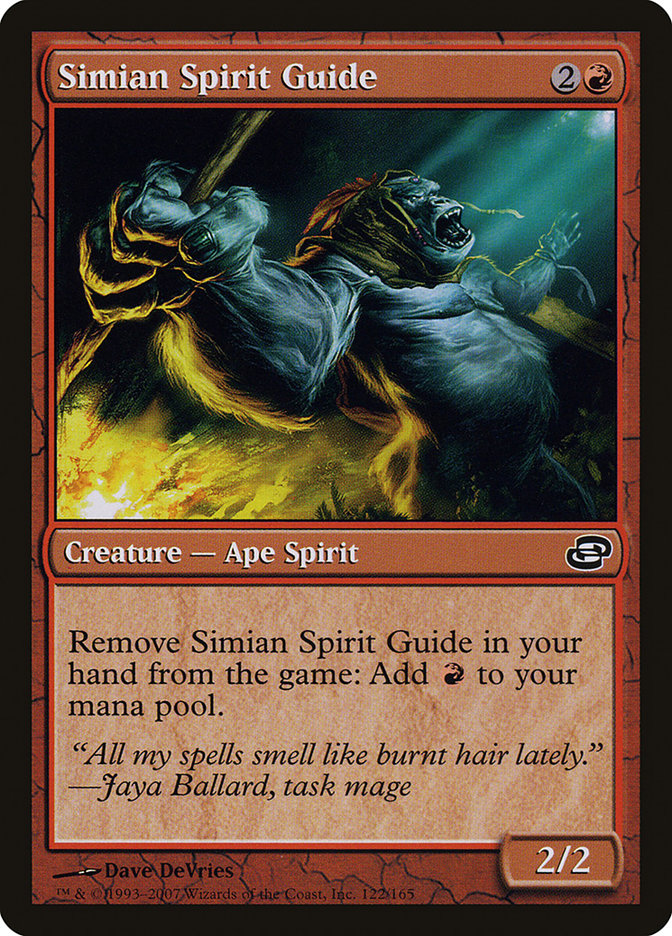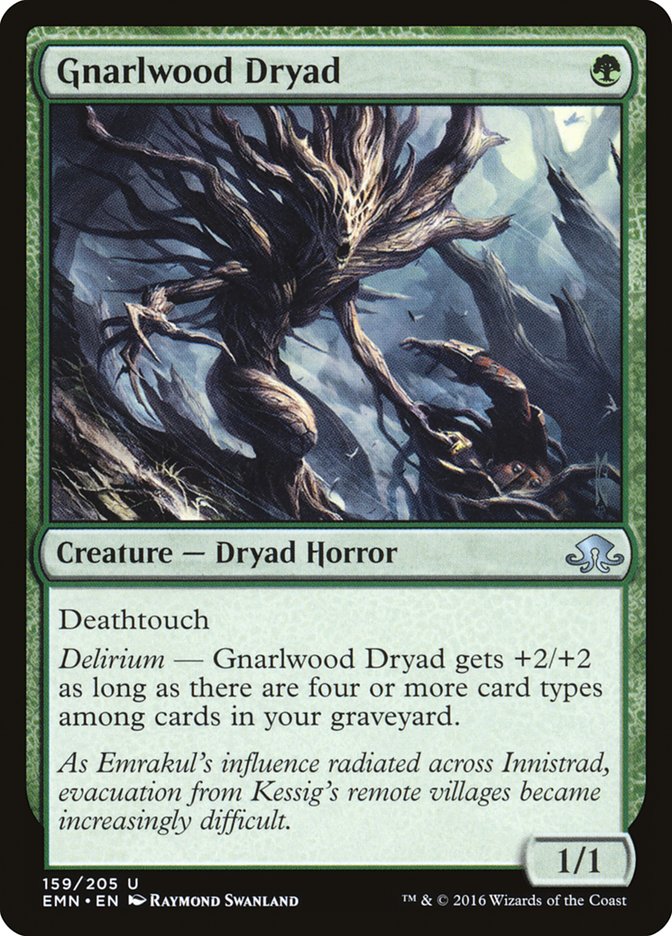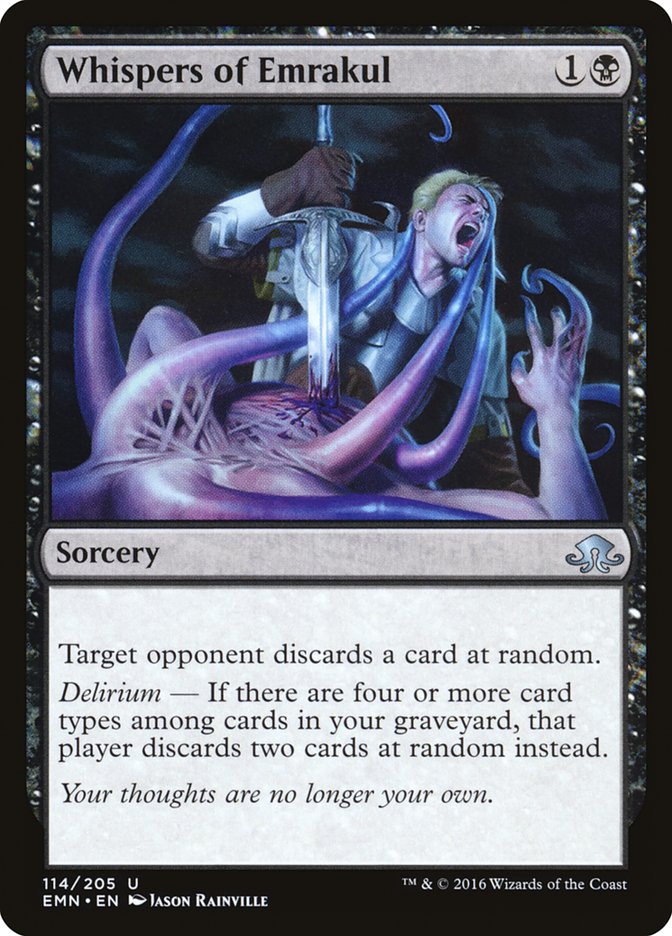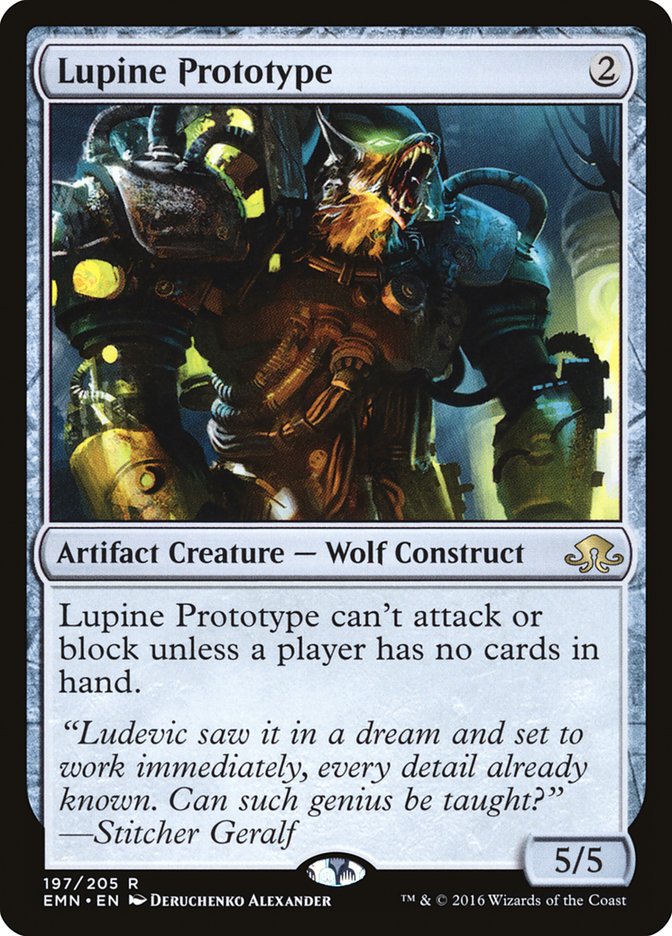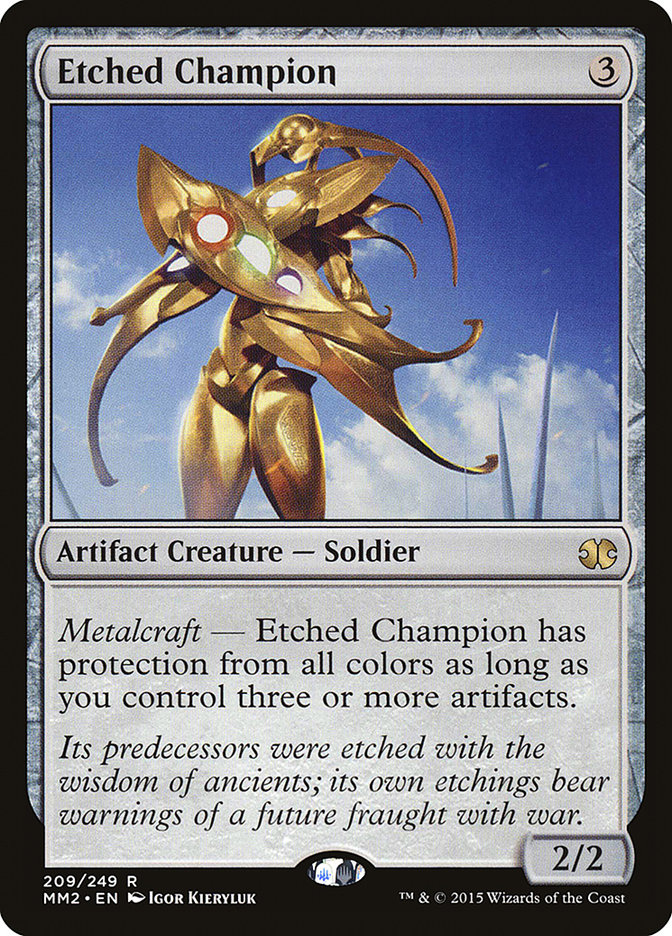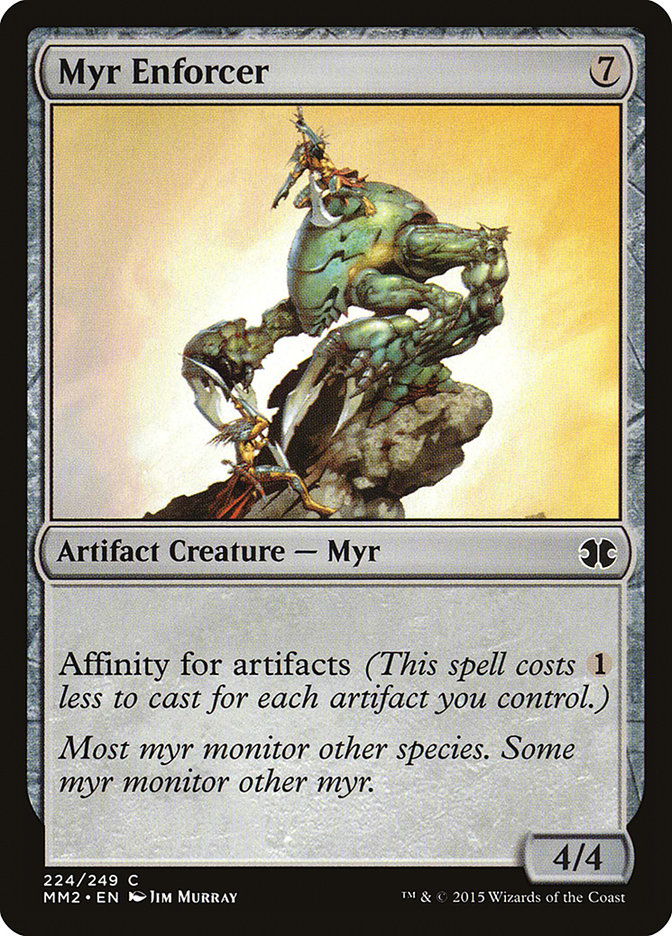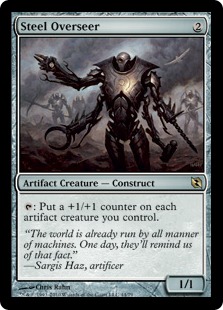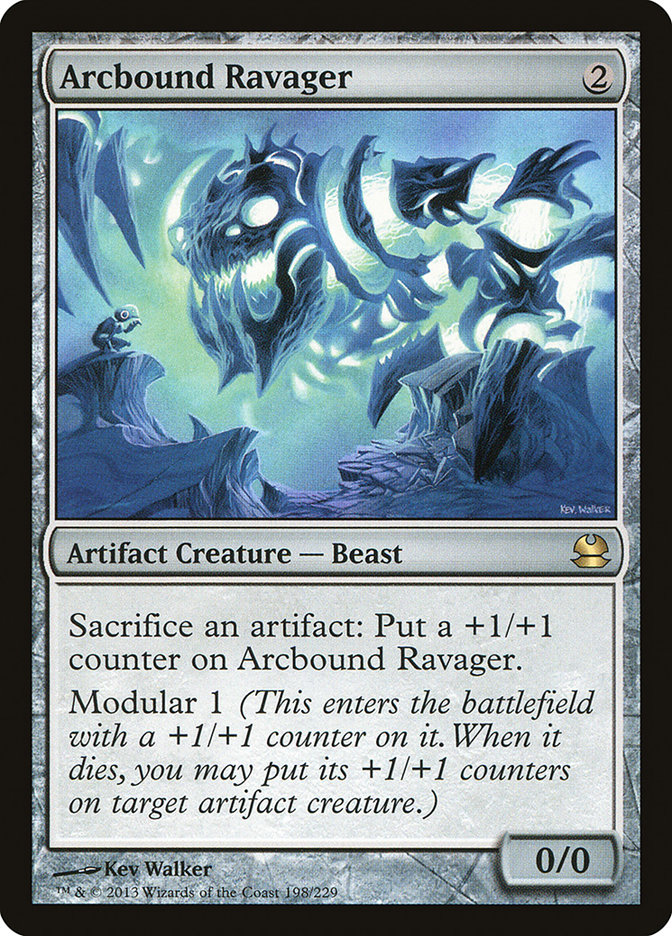Recent sets have been kind to Modern, and Eldritch Moon is no exception, despite being a small set. Even with only a third of the set spoiled, there are plenty of new cards to talk about.
Eldritch Evolution
I’m leading off on the heavy hitter here. Eldritch Evolution is the card everyone is trying to break in the format and is the reason Allosaurus Rider has been scoured from the internet. They aren’t entirely wrong here and Eldritch Evolution is likely to be a big player in Modern.
The interaction between this card and Allosaurus Rider is very powerful. Making an eight- or nine-cost creature on turn 3 or earlier should end the game most of the time. But it isn’t a framework for a deck. There isn’t another Eldritch Evolution; you only get four. There are other cards similar to Allosaurus Rider, but none quite the same. The play pattern you are looking for is to cast a reduced cost creature and then immediately Eldritch Evolution it into something massive to avoid removal. Most of the ways to cheat something in this way cost too much mana to make this reliable. Until another freebie like Allosaurus Rider comes along, the full broken mode of Eldritch Evolution is going to struggle.
Delve is not a good way to do this. Making your combo now pass through the graveyard opens you up to tons of interaction, not to mention that playing a three-mana conditional sorcery and costly monsters does not help with delve. Playing nine-drop tutor targets and presumably overloading on cantrips to delve harder is similarly bad deckbuilding. Or just the fact that Hooting Mandrills plus Eldritch Evolution in the same turn is four mana, which is the same as Unburial Rites Flashback. You can already make any of the eight- or nine-cost creatures for the same cost, so why is this way better?
What about when a low redundancy combo was previously a pillar of Modern? Blue versus green. Turns out having access to Serum Visions makes everything easy, while Allosaurus Rider removes that option due to its green card hunger. Allosaurus Rider plus Eldritch Evolution also gets much worse over time as the alternate cost requires multiple pitchable green cards in hand, while Deceiver Exarch plus Splinter Twin just happens and they die with no extra stuff needed.
Did I mention the dying part? Tutoring up Iona, Shield of Emeria or Griselbrand or Elesh Norn, Grand Cenobite is good, but it doesn’t necessarily win the game on the spot. This is a constant issue for Legacy Reanimator as well, and Eldritch Evolution takes more resources to fire off in this fashion.
So how can I say All-In Eldritch Evolution isn’t feasible but the card is still really powerful?
Oh, that’s no fun. It’s just the truth.
Eldritch Evolution’s real place is going to be similar to Chord of Calling in the various creature combo decks. Instead of having a card that is a blank if your opponent keeps you resource-light with removal, Eldritch Evolution cashes in for easy value. Birds of Paradise to Eternal Witness for another threat. Random other creatures to a real midrange threat or hate card. Or just anything to Kiki-Jiki, Mirror Breaker with Restoration Angel on the battlefield.
These decks won’t look much different from the current Abzan Company or Kiki Chord decks, but they will have more redundancy in finding their knockout cards against linear decks and have more resiliency against removal.
Don’t leave home without your Grafdigger’s Cages. Two of the best decks in Modern just got better.
Curious Homunculus
Curious Homunculus has been hyped as a new threat for Delver of Secrets based decks. It makes sense: it’s a cheap but large threat that has the “instant or sorcery” tie-in.
However, once you examine it a little more closely, some definite flaws pop up, mainly as two-drop threat space is limited and Curious Homunculus is fighting some heavy hitters. The super-obvious one is that Curious Homunculus is basically a worse Tarmogoyf in most situations. Tarmogoyf and Curious Homunculus both double down on graveyard vulnerability with Snapcaster Mage, unlike Young Pyromancer or other threats. The first turn cycle, Curious Homunculus is a 1/1 while blocking; Tarmogoyf is bigger and immediately stabilizes the game. You need multiple prowess triggers to really get Voracious Reader over the normal Tarmogoyf ranges. The cost reduction upside doesn’t matter for most of the instants and sorceries in these Delver decks.
That isn’t the end for Curious Homunculus, however. Being worse than Tarmogoyf and Young Pyromancer doesn’t close all the doors. If your deck isn’t playing green or red, Curious Homunculus is a solid threat that is at least close enough on power level. I can’t imagine wanting to play Mono-Blue Delver in Modern, but U/W brings some powerful cards like Path to Exile and sideboard hate that previously weren’t accessible.
Also note that Voracious Reader makes Remand and Mana Leak much more exciting, especially with Snapcaster Mage. No-mana Dismembers aren’t terrible either. Just because your other cards push towards all one-cost spells doesn’t mean you definitely have to play those.
Creatures (13)
Lands (18)
Spells (29)
- 3 Mana Leak
- 4 Serum Visions
- 3 Remand
- 2 Spell Snare
- 1 Sunlance
- 4 Path to Exile
- 4 Gitaxian Probe
- 4 Thought Scour
- 4 Take Inventory
Sideboard

Note that I chose to feature another Eldritch Moon card here. Take Inventory has some nice overlap with Thought Scour that makes it at least worth considering for Modern. This deck isn’t especially good with Ancestral Vision without the red or black attrition tools to extend games, but Take Inventory gives you some of the same late-game card advantage at a lower early cost with extra Curious Homunculus mana.
Minor notes: Meddling Mage is also considerable. The mana doesn’t have to be fetch- and shock-heavy, as you have no double white spells to cast early.
Note that I didn’t include black in the above discussion. I’m not sure if Curious Homunculus is better than the delve threats, but it doesn’t really bring anything new to the table. It is still bad against graveyard hate, with a 1U 1/1 only being slightly better than casting six- or seven-drops in your Delver deck. It’s approximately the same amount of effort to get going. The only comparison is that it is slightly smaller than Gurmag Angler and not as end-game-ish as Tasigur, the Golden Fang in exchange for being better in multiples. If Thoughtseize and Serum Visions is your thing, give this card a whirl and let me know how it goes.
One last thought: Curious Homunculus seems really good in Esper. That archetype already had Geist of Saint Traft and Lingering Souls as unique and powerful ways to win, but lower on the curve it was really lacking. Zur the Enchanter was not the answer due to clunkiness, but Curious Homunculus might be. The synergy with Lingering Souls certainly makes it worth considering.
Thalia, Heretic Cathar
In normal mode Thalia, Heretic Cathar is borderline good enough for Modern. The Kismet effect solves a lot of issues for the white creature decks by slowing down combo and blockers that outclass their other threats. She is a reason to really think about your land sequencing and to make sure your spells are not going to require you to fetch for a shockland on a later turn.
The problem is timing. On the play on turn 3 it is good, but on the draw it might be too slow. Even worse, it’s a little too easy to hold up removal for it by the time it is being cast and punish the 3/2 body associated with the card.
Thankfully, there are ways to build your Hatebears deck to resolve a turn 2 Thalia, Heretic Cathar. The stock one is Noble Hierarch. Despite the B/W hype, the G/W list of Hatebears was likely the best one in the format already. Just having access to green creatures that don’t die to Lightning Bolt is enough to make that true. Thalia, Heretic Cathar is a natural fit here. Noble Hierarch into Thalia is game-ending a lot of the time, and she does a good job of making it hard to block down a Loxodon Smiter. The extra attack against a tapped blocker matters a lot more when your creatures hit hard to begin with.
Note: Naya Company is basically the same thing here as G/W Hatebears. It might even be a better Noble Hierarch shell as the G/W list already has plenty of anti-combo tools, while Naya is short on maindeckable ones. Even just providing the one turn makes Thalia a big deal.
The slightly more interesting accelerator is Simian Spirit Guide. Between Thalia, Heretic Cathar and Magus of the Moon, you now have eight land hate cards to slam on turn 2. Previous Simian Spirit Guide and Magus of the Moon teamups have been a bit more Stax-y with cards like Ghostly Prison and Chalice of the Void, but Thalia is not a true lock and pushes towards actually killing them. This is the kind of deck that I know won’t be good long-term, but I’m interested in seeing what cards end up pairing with this shell when it eventually does well at one event.
Gnarlwood Dryad
Gnarlwood Dryad has flown a bit under the radar, but I would not be surprised to see it pop up in Modern. I’m not sure anyone has exactly figured out how easy it is to get to delirium, as Traverse the Ulvenwald is the only other payoff and is super-complicated, but plenty of midrange or tempo decks seem really good at getting to a 4/5 Tarmogoyf. When they do get to four card types, this is close to Delver of Secrets. It might even be possible to build a deck around the concept of playing eight one-drop three-power threats with cards like Vapor Snag to push really hard downhill. Just be sure to load up on Mutagenic Growth to handle opposing Lightning Bolts.
Whispers of Emrakul
Note that I am not excited by this card. Having the card be great if you hit delirium early is good, but the ability is one that’s naturally fine but should get better going late. Whispers of Emrakul plays the opposite way. It’s unplayable late and unplayable pre-delirium. The window for this card is just too small to be worth considering, while Gnarlwood Dryad is always a 3/3 after a few turns.
Lupine Prototype
If only there were an aggro artifact-themed deck that dumps its hand early… #Modern #MTGEMN #Affinity pic.twitter.com/EQFTODa31l
— Craig Wescoe (@Nacatls4Life) June 30, 2016
Cheap large artifact threats scream “put me in Affinity.” Lupine Prototype is certainly close to playable, but I don’t think the current versions of Affinity are quite where it belongs.
The biggest issue is the conflict between getting hellbent to activate Lupine Prototype and playing cards that cost colored mana. Affinity decks now play powerful cards like Thoughtseize, Spell Pierce, and Galvanic Blast, knowing there is some chance that they will get stuck in their hand. Any hand with multiple copies of such cards almost ensures that you will have to spread them out over multiple turns.
Lupine Prototype does not like this.
Similarly, any cards that lock up a turn’s worth of mana to cast won’t work out. That means fewer or almost no Etched Champions if you play Lupine Prototype. The weird place this comes up is that prior iterations of All-In Affinity have played more actual Affinity cards like Myr Enforcer, which tend to get stuck in hand at times.
There might even be a bit of two-drop glut already that makes Lupine Prototype awkward at times. You have two Arcbound Ravagers and Lupine Prototype. What turn are you attacking with your 5/5? What if you draw a Cranial Plating in the middle?
Enter Simian Spirit Guide, or the generic solution to “how do I deploy my cards faster” in Modern. If you can maximize the number of “double-two-drop by turn 2” hands you have, Lupine Prototype starts looking really good. Note that Simian Spirit Guide still lets you play red cards in lower quantities, lets you cut down on lands to prevent flood from shutting down Lupine Prototype, and works really well with Blood Moon out of your sideboard.
Creatures (31)
- 4 Arcbound Ravager
- 4 Ornithopter
- 4 Simian Spirit Guide
- 4 Steel Overseer
- 3 Memnite
- 4 Signal Pest
- 4 Vault Skirge
- 4 Lupine Prototype
Lands (15)
Spells (14)
Sideboard

I don’t think this will become the new stock list, but I don’t think it is without merit. Etched Champions are clearly best when you expect mostly interactive opponents. Spell Pierce or Thoughtseize is clearly best when facing true combo. But there are enough pure race matchups like Burn, Abzan Company, and the mirror that a hyper-aggressive Lupine Prototype build of Affinity might be the right one for a specific weekend.
If I were to describe the early impact of Eldritch Moon on Modern, I would call it branching and divergent. There’s nothing abruptly new here. All of the good cards push existing shells, just in slightly different ways. That may not seem like a lot, but in the grand scheme of things it is. Modern is a format with a lot of ripple effects going on in the metagame, and just a few shifts in how decks operate can have massive implications for the playability of other archetypes. If this is what the first third of Eldritch Moon has to offer, I’m looking forward to the rest of it.


